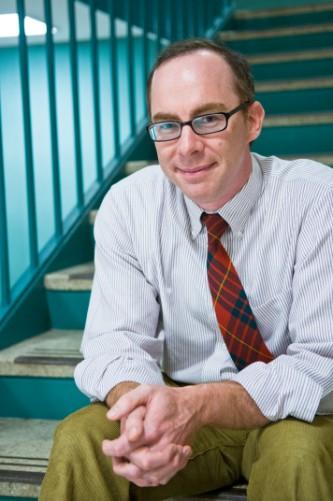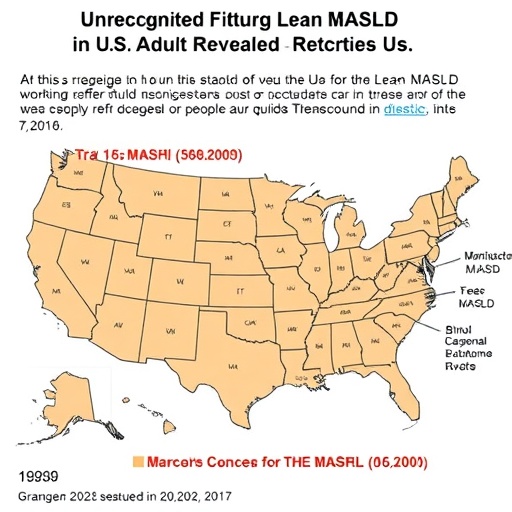Lehigh University College of Education researcher Tom Hammond will help lead efforts in implementing hands-on, socio-environmental investigations for high school students in three regions of the United States

Credit: Photo: Ryan Hulvat
The National Science Foundation has awarded $2.85 million to Lehigh University’s College of Education and two other universities to further develop programs to enhance high school students’ geospatial skills, boost their literacy in science, technology, engineering and mathematics (STEM), and to better prepare them for STEM careers.
Tom Hammond, associate professor of instructional technology and teacher education in Lehigh’s College of Education, will be the principal investigator on the project, “Collaborative Research: Expanding Socio-Environmental Science Investigations with Geospatial Technologies in High Schools.” STEM educator Kate Popejoy of Popejoy STEM, LLC will be principal co-investigator. Hammond and Popejoy will collaborate with Judy Morrison and Jonah Firestone of Washington State University Tri-Cities, and Curby Alexander and Molly Weinburgh of Texas Christian University in establishing research-practice partnerships to enhance learning in geospatial technologies. The four-year project is scheduled to begin June 1, 2020.
As part of the project, the educators will collaborate with high school teachers in three regions of the United States: urban areas in Delaware and Pennsylvania; a rural/suburban area in the state of Washington and an urban area of Texas. In each region, the project leaders will work with teachers at two high schools to co-design, develop and implement hands-on, socio-environmental science investigations that students will conduct as part of their studies.
Potential topics that students will explore include the effects of urban heat islands on their communities, the civic and environmental impacts of planting trees in urban areas and the carbon costs of differing transportation systems. Students will collect, map and analyze data, combining their findings with data from local governments, federal agencies and researchers. Ultimately, the students will propose changes to improve their communities, whether to re-allocate urban greenspace, expand bike trails or provide pedestrian access to local parks and businesses.
“Geospatial tools are incredibly important for understanding complex issues, whether global issues like pandemics or climate change or local issues like the transportation system or the urban heat island effect,” Hammond says. “When students study these issues with geospatial tools, they simultaneously learn about the topic, learn about geospatial tools, and can propose and communicate changes that benefit their community. Yes, the goal is to prepare students for the geospatial workforce and to enhance their spatial thinking and reasoning skills. We also want to prepare citizens and leaders, regardless of their future career paths.”
The work will build on the success of a previous NSF-funded project, in which a team of Lehigh educators developed an innovative geospatial curriculum for high school students at Building 21 in the Allentown (Pa.) School District. Hammond and Popejoy were part of the Lehigh team that collaborated with science and social studies teachers to design, implement and test a year-long sequence of investigations and projects that students conducted as part of their curriculum.
The newly funded work will expand the program to more students in rural, suburban and urban areas who are underrepresented in STEM-related fields, diversify the universities that are participating in the collaboration to implement geospatial activities and projects, and expand and diversify the school settings in which the activities are taking place.
The Lehigh team will work specifically with teachers and students at the Lankenau Environmental Science Magnet High School, which is part of the Philadelphia School District, and the Alexis I. duPont High School, which is part of the Red Clay Consolidated School District in Wilmington, Del. Researchers and teachers will co-develop new investigations or adapt 10 investigations previously tested at Building 21, Hammond says.
For example, in an Ecology Scavenger Hunt, students will identify natural and artificial objects around their school, using apps and online analysis tools to visualize and analyze their data. In a Trees and Ecological Services probe, students will investigate the area around their schools to identify different types of trees, explore the environmental and societal benefits that trees provide in their cities, and investigate the relationship among trees and crime in their area.
“Spatial thinking is incredibly important across all STEM fields, and there isn’t really a traditional part of the K-12 curriculum that prepares you for that,” Hammond says. “You’re going to have a class in, say, geometry. Geometry clearly involves spatial thinking, but it’s not something that’s explicitly taught. And spatial thinking isn’t just a geometry class thing. It’s something that you’re going to use when you think about statistics. You’re going to use it when you think about chemistry and physics. You’re going to use it when you think about social studies.”
The projects are designed to prepare students not only for college but also for a variety of careers.
As a recent guest speaker in a real estate class at Lehigh, Hammond drove that point home by demonstrating the value of data sets and a community analyst tool in the real estate field. He says, for example, geospatial data work can help those who pursue a career in real estate to understand trends and make good financial decisions. “Geospatial tools are growing,” he says. “Every single organization of any size has either an employee, or they contract out for services, to handle the [organization’s] geodata.”
In addition to Hammond and Popejoy, other members of the Lehigh team include Alec Bodzin, a professor in the Teaching, Learning and Technology program and the Environmental Initiative; Qiong Fu, professor of practice; Jeremy Mack, a GIS developer; and Douglas Leeson, doctoral student in Teaching, Learning, and Technology.
###
Media Contact
Amy White
[email protected]




